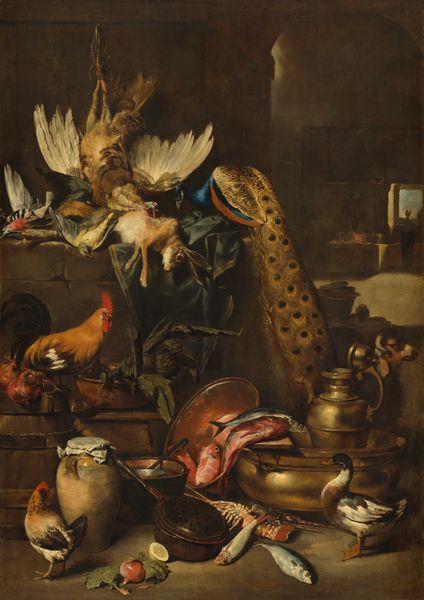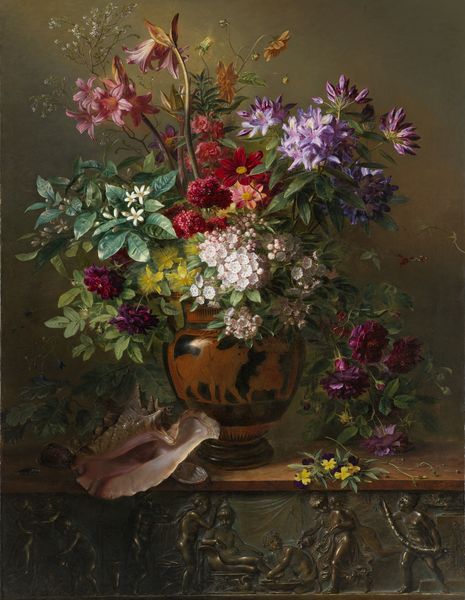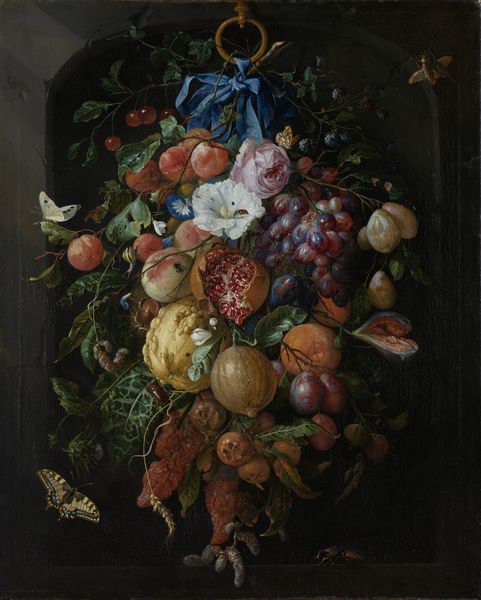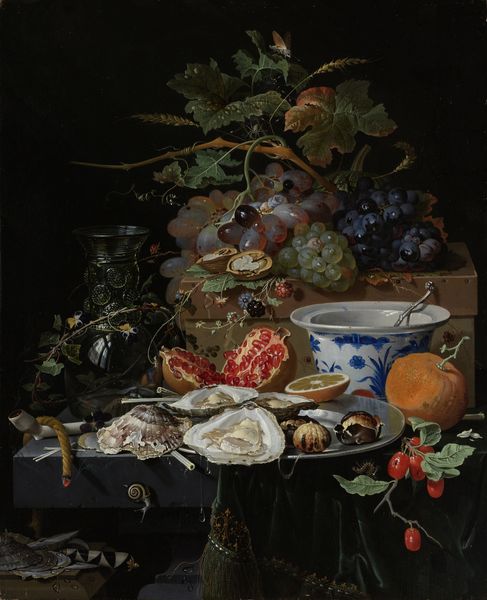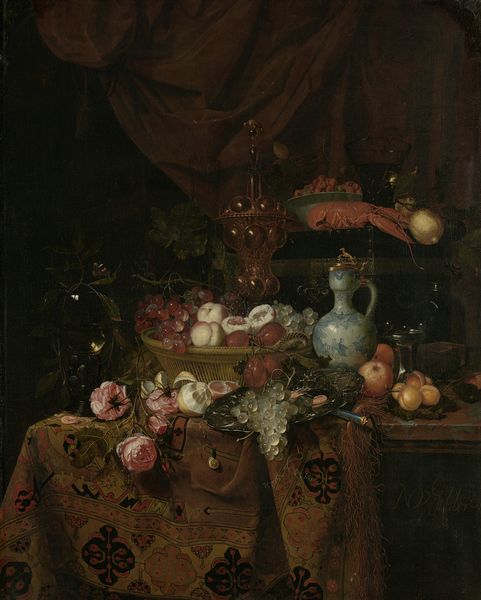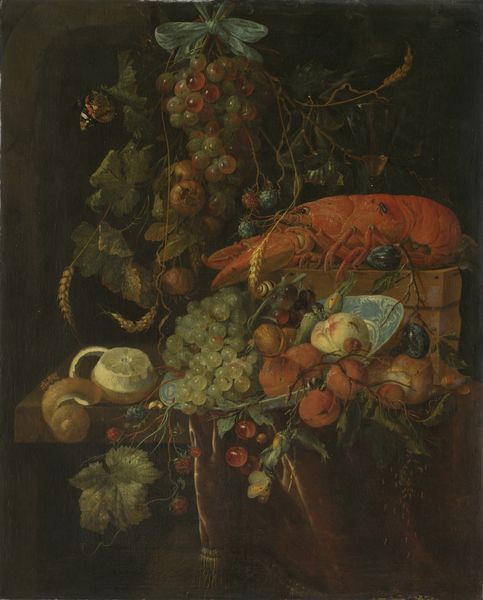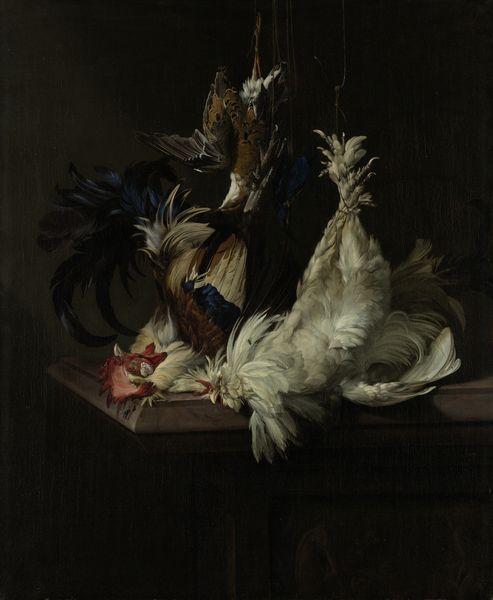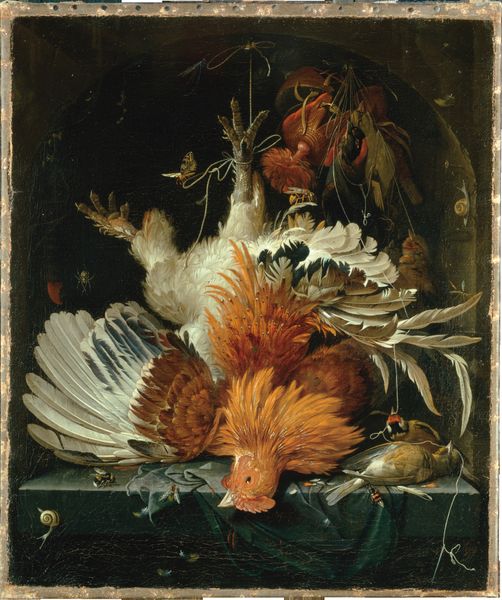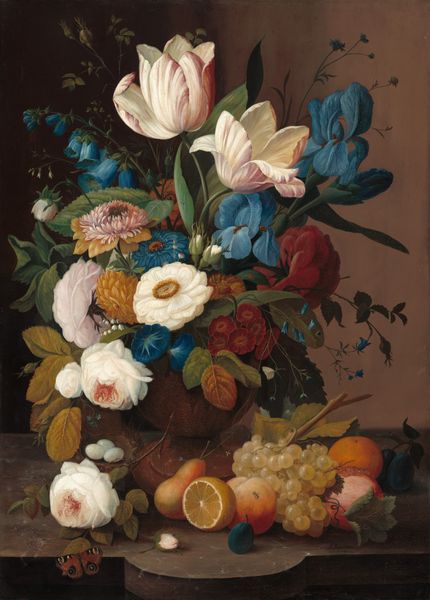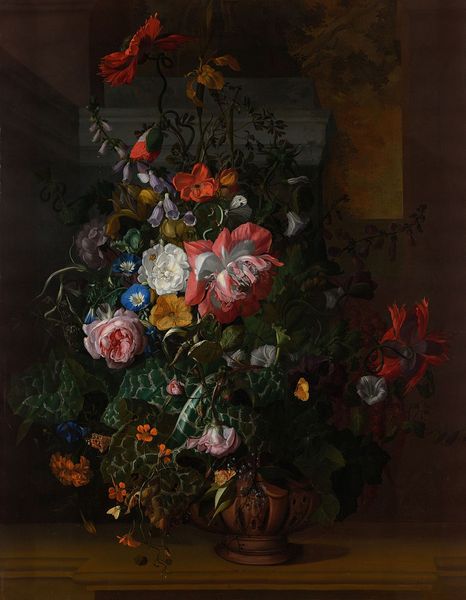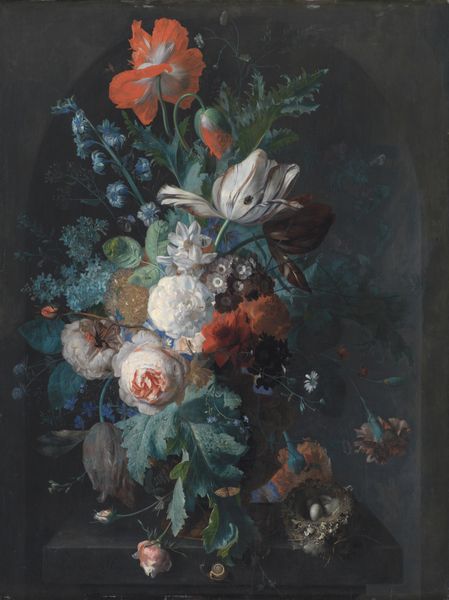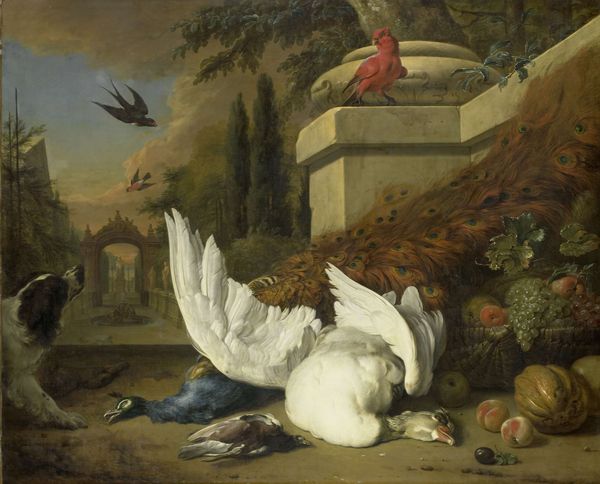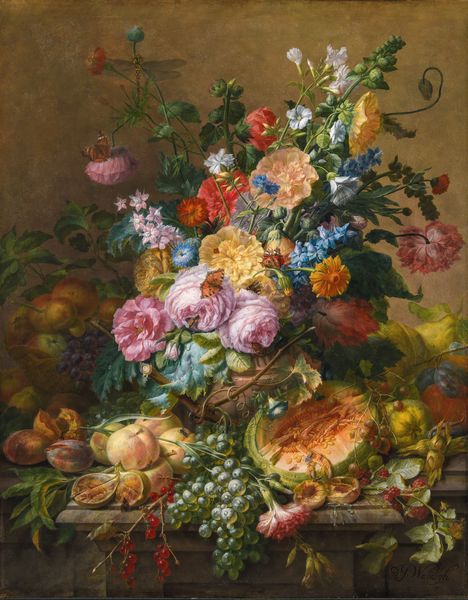
Still Life with Game and a Greek Stele: Allegory of Autumn 1818
0:00
0:00
oil-paint
#
allegory
#
oil-paint
#
landscape
#
oil painting
#
classicism
#
underpainting
#
romanticism
#
orientalism
#
painterly
#
painting painterly
#
genre-painting
#
history-painting
#
academic-art
Dimensions: height 146 cm, width 116 cm
Copyright: Rijks Museum: Open Domain
Curator: So, here we have Georgius van Os’s "Still Life with Game and a Greek Stele: Allegory of Autumn," created in 1818. It’s a complex piece, brimming with objects and textures. Editor: It’s a very striking composition; all these dead animals are juxtaposed with such vibrant foliage and this Greco-Roman style stele...What should we be looking at here? Curator: Consider first the labour that would go into such a production. Someone had to acquire, kill, and prepare these animals. Then, the creation of the stele itself – who carved that, and under what economic conditions? Editor: That's true, it feels divorced from our contemporary grocery store experiences. You mention the conditions of its creation, are you suggesting we focus on the social context informing how art objects came to be and what sort of societal strata they come from? Curator: Precisely. The dead game signifies not just harvest, but a particular system of land ownership, class division, and conspicuous consumption. Oil paint too was a manufactured material—what resources were required to produce these pigments? The artist relies on a vast, complex, hidden system. Consider the artistic labor too - was van Os valorizing the craft of painting or the ownership that permitted for it? Editor: So the beautiful flowers and game obscure these questions about ownership and labour and consumption? Curator: Not necessarily obscure, but maybe transfigure. The painting serves as a signifier to explore how value, whether cultural or economic, is assigned and made, from the raw material to the finished piece. And by understanding the materiality we can unearth deeper questions about society and class in van Os’ time. Editor: That’s given me a totally different perspective! Thank you for pointing out these economic factors involved in the painting's creation and that van Os uses art to call them into the canvas itself. Curator: Exactly, there is always a story within a story when considering any object.
Comments
rijksmuseum about 2 years ago
⋮
Dead animals, a gun and a powder horn: everything in this still life relates to hunting. The Greek marble stele (memorial tablet) in the background presents a huntress (the goddess Diana?), and the bronze relief in the foreground depicts putti hunting. The pendant of this painting (next to it) also includes a relief, that one showing Venus, the goddess of love, making her toilet.
Join the conversation
Join millions of artists and users on Artera today and experience the ultimate creative platform.
